Megalyra
Scott Richard Shaw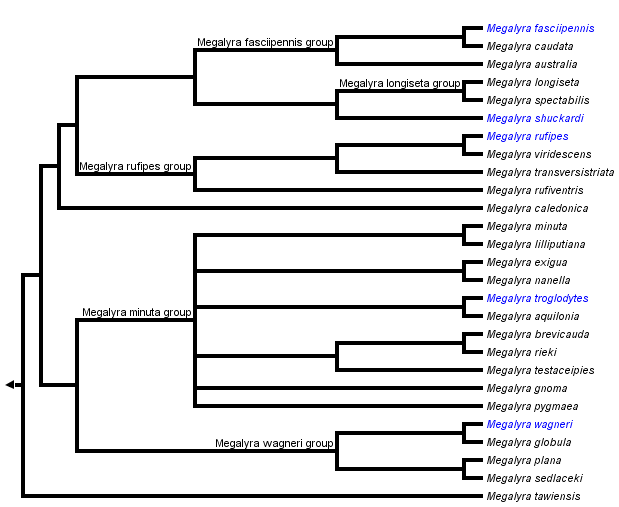


This tree diagram shows the relationships between several groups of organisms.
The root of the current tree connects the organisms featured in this tree to their containing group and the rest of the Tree of Life. The basal branching point in the tree represents the ancestor of the other groups in the tree. This ancestor diversified over time into several descendent subgroups, which are represented as internal nodes and terminal taxa to the right.

You can click on the root to travel down the Tree of Life all the way to the root of all Life, and you can click on the names of descendent subgroups to travel up the Tree of Life all the way to individual species.
For more information on ToL tree formatting, please see Interpreting the Tree or Classification. To learn more about phylogenetic trees, please visit our Phylogenetic Biology pages.
close boxIntroduction

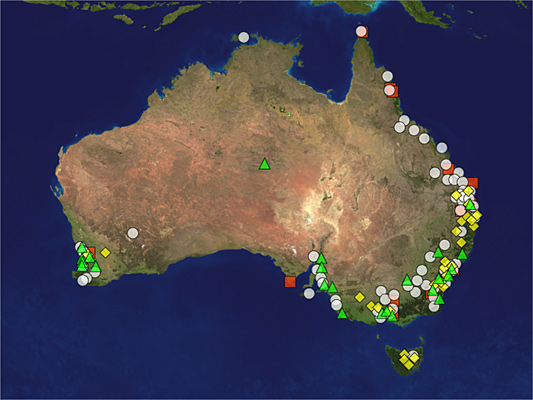
Distribution of four Megalyra species (adapted from Shaw, 1990); symbols represent known collection localities. White circles: M. fasciipennis; red squares: M. wagneri; yellow diamonds: M. rufipes; green triangles: M. shuckardi. Satellite image courtesy of NASA / JPL.
References
Shaw, S. R. 1990a. A taxonomic revision of the long-tailed wasps of the genus Megalyra Westwood (Hymenoptera: Megalyridae). Invertebrate Taxonomy 3:1000-1052.
Shaw, S. R. 1990b. Phylogeny and biogeography of the parasitoid wasp family Megalyridae (Hymenoptera). Journal of Biogeography 17:569-581.
Title Illustrations

| Scientific Name | Megalyra fasciipennis |
|---|---|
| Location | Australia |
| Specimen Condition | Dead Specimen |
| Life Cycle Stage | Adult |
| Size | 11-20 mm |
| Copyright |
© 2005 Scott Richard Shaw

|
| Scientific Name | Megalyra troglodytes |
|---|---|
| Location | Australia |
| Comments | Female on the mud nest of its sphecid host |
| Creator | Ian Naumann |
| Specimen Condition | Live Specimen |
| Sex | Female |
| Size | 4 mm (body), 8 mm (ovipositor) |
| Copyright | © 1987 CSIRO Canberra |
About This Page
Scott Richard Shaw

University of Wyoming, Laramie, Wyoming, USA
Correspondence regarding this page should be directed to Scott Richard Shaw at
Page copyright © 2005 Scott Richard Shaw
All Rights Reserved.
- First online 18 February 2005
Citing this page:
Shaw, Scott Richard. 2005. Megalyra. Version 18 February 2005 (under construction). http://tolweb.org/Megalyra/28842/2005.02.18 in The Tree of Life Web Project, http://tolweb.org/




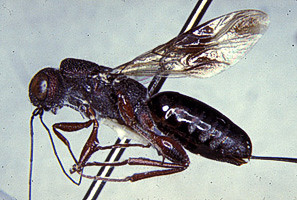
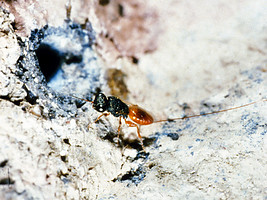

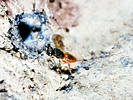

 Go to quick links
Go to quick search
Go to navigation for this section of the ToL site
Go to detailed links for the ToL site
Go to quick links
Go to quick search
Go to navigation for this section of the ToL site
Go to detailed links for the ToL site